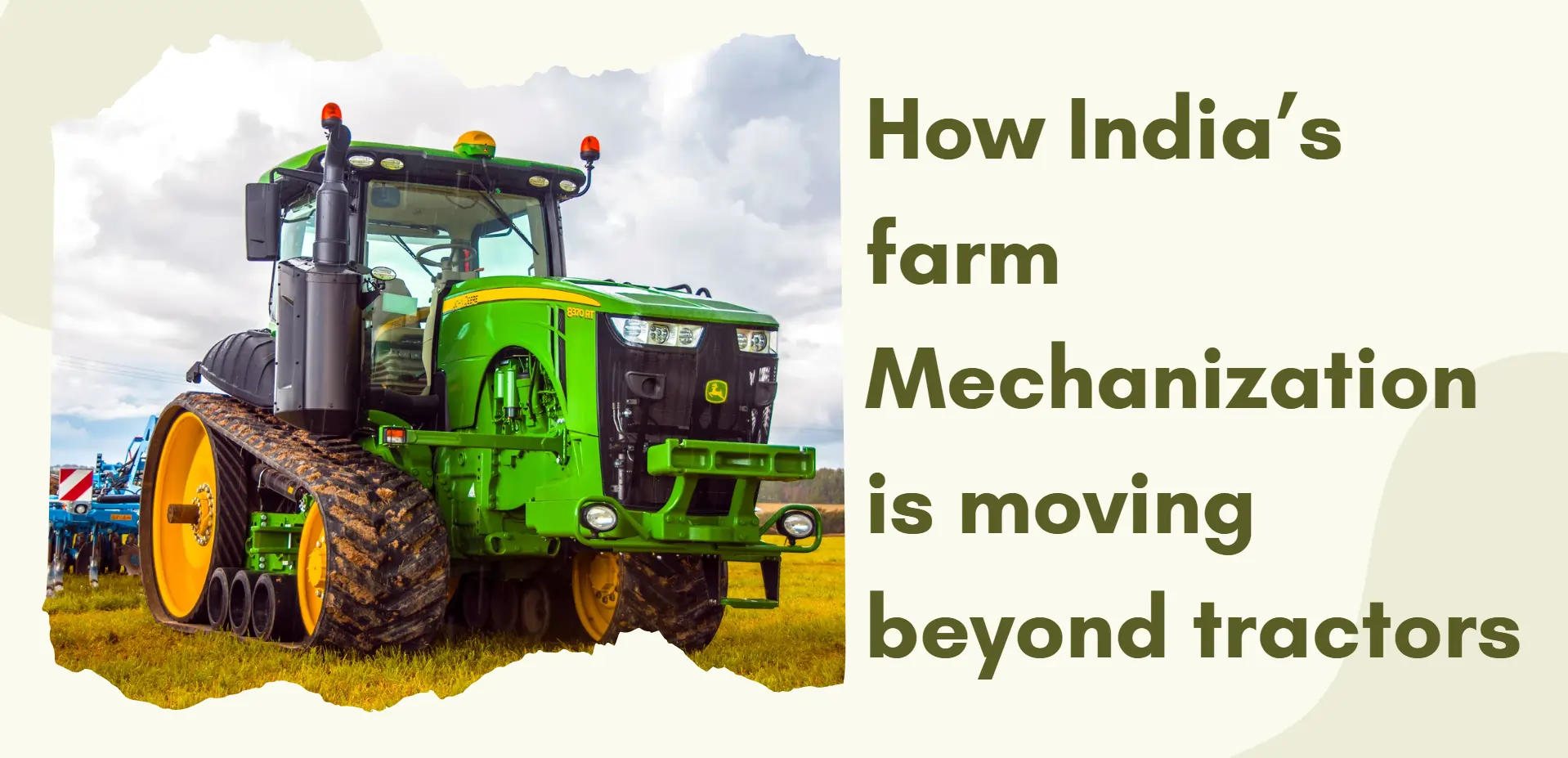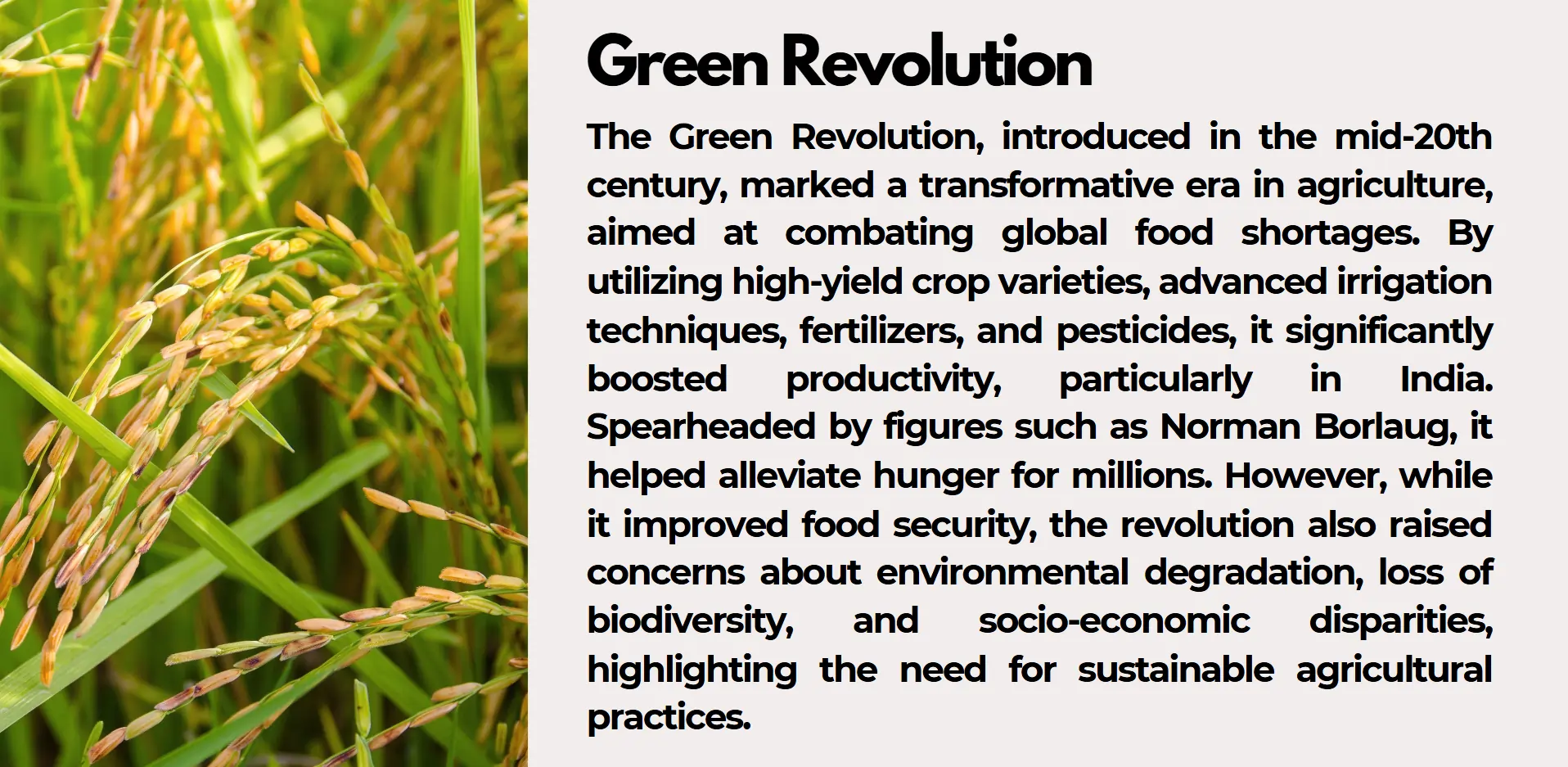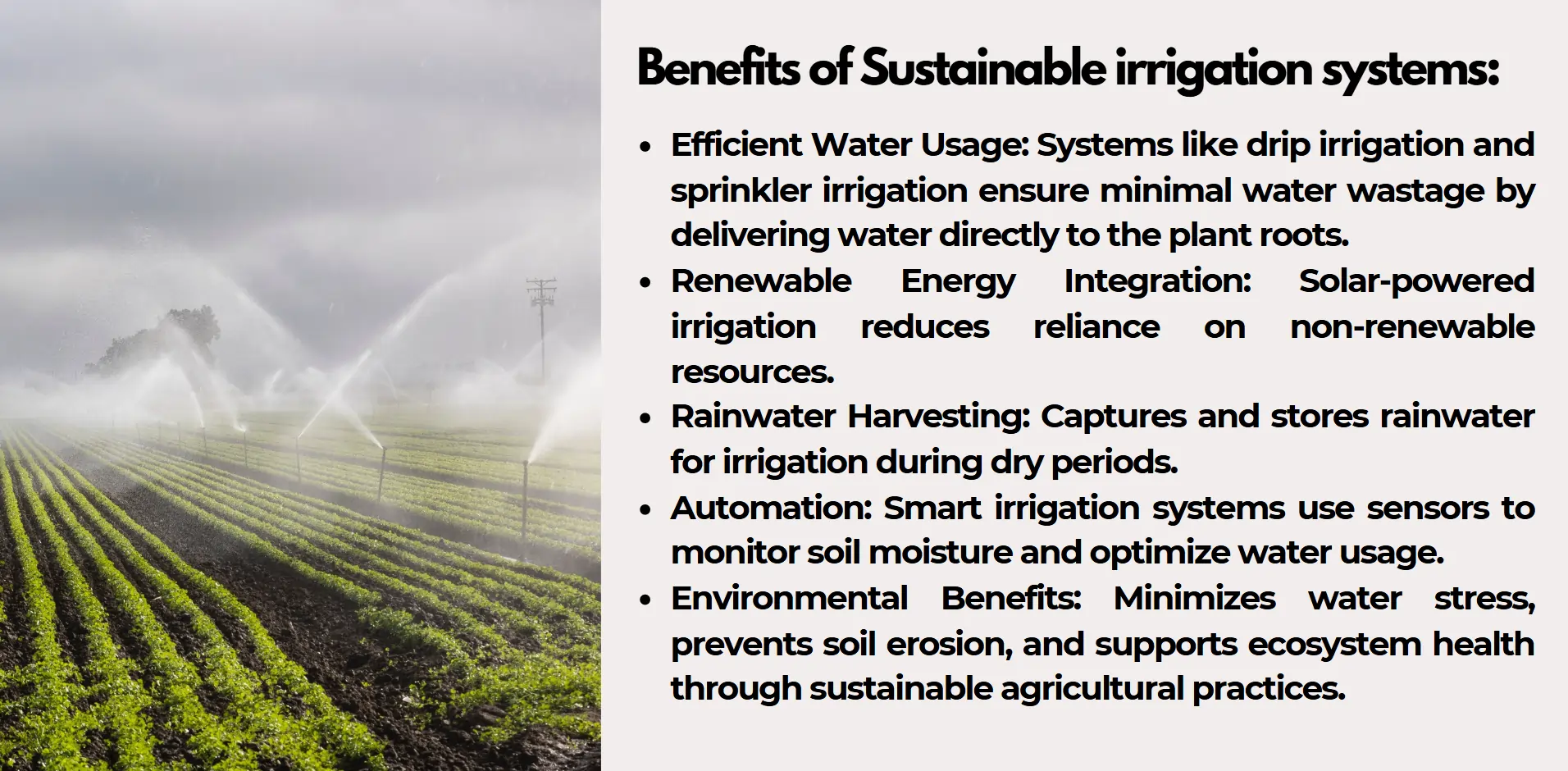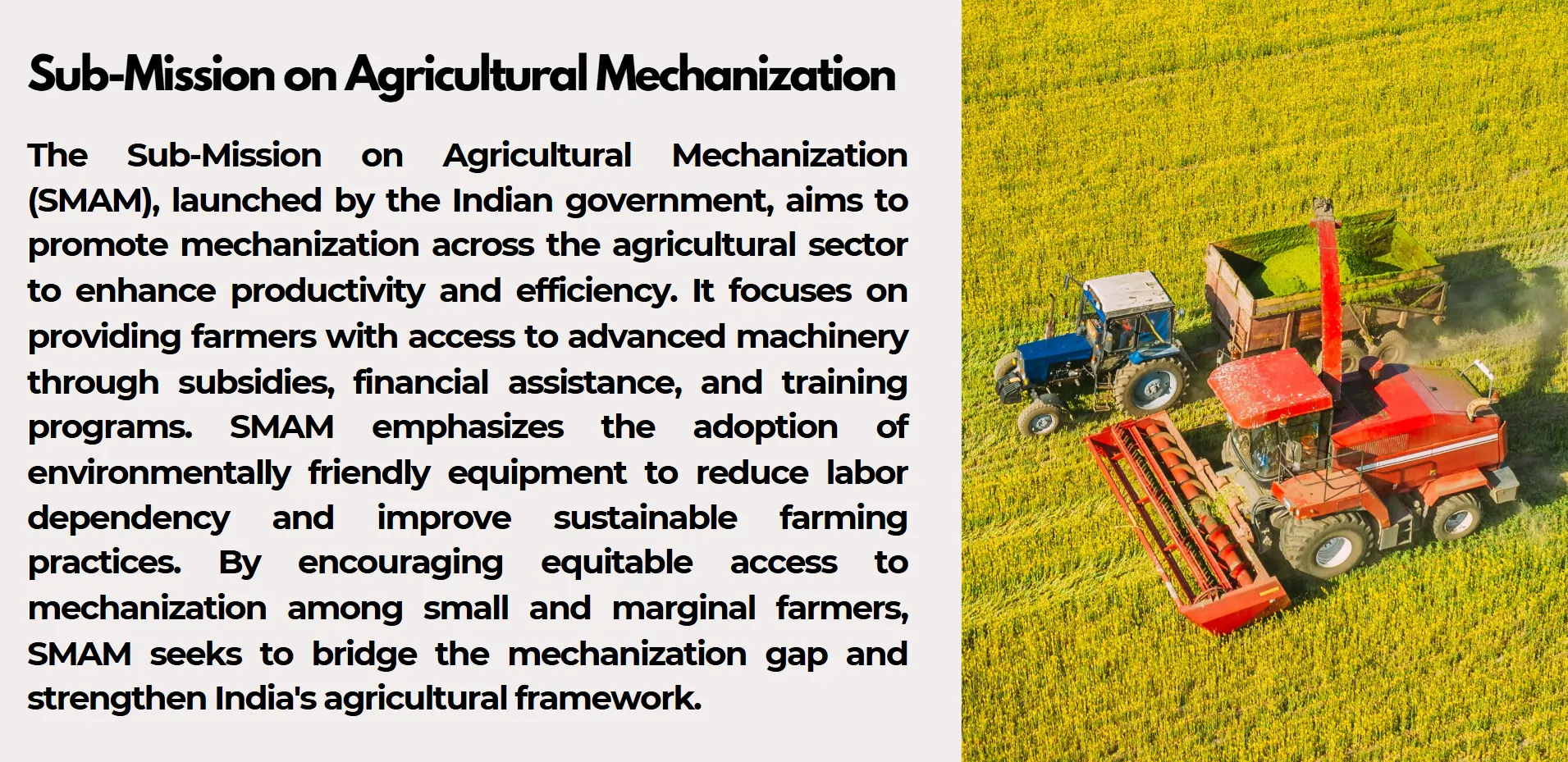The worldwide market for tractors remains smaller compared to that of farm machinery. Growing worker deficiencies in agriculture lead businesses to purchase multiple types of farm equipment including harvesters and rotators which are now gaining prominence in the Indian market.

India's agricultural domain is facing a fundamental transformation because mechanised farms now enrich their tractor-based operations. Mechanized farming depends on tractors as its core support but new market conditions of labor expenses along with climate changes and crop-specific requirements call for modern technological solutions. A new diversified mechanisation period emerges through the introduction of advanced agricultural machines alongside precision technologies which include drones and IoT-enabled systems. The transition enables greater agricultural efficiency and better productivity results together with increased sustainability throughout farming operations. India must keep its eyes on access equality, cost efficiency and support innovation to deliver benefits across all farm sectors during the adoption of new agricultural technologies.
Mahindra Going Beyond Tractors, Revolutionising Agriculture With Farm Mechanization
The history of mechanical innovations in Indian agricultural practices strongly depends on the adoption of tractors across the country. The tractor established itself as the foundation of agricultural development after Indian independence as the nation dealt with food scarcity and required increased agricultural production amounts. During the Green Revolution of the 1960s farmers recognized tractors as fundamental devices for cultivation work which included land plowing and soil tilling as well as product hauling. The tractor replaced traditional human labor methods which delivered higher farming efficiency to Indian agriculture despite labor shortages and speeded up cultivation rates.

Tractors earned their status as agricultural equipment of the future through time and became accepted by the Farmer Community as their most essential property. Farmers under Punjab, Haryana and Uttar Pradesh utilized these vehicles significantly to transform their agricultural production because these regions required maximum agricultural yield. The government enabled tractors' market entry through financial support which allowed farmers to borrow money and receive incentives to purchase machines at various operational scales.
Future Growth and Opportunities in Agricultural Machinery
Tractor-based agricultural mechanization adopted by farmers revealed certain substantial restrictions. Indian farming landscapes required equipment beyond basic tractors because the machines demonstrated limited capabilities for managing the diverse agricultural requirements. Only tractors proved insufficient when addressing the different needs across various crops, agricultural stages and regional farm requirements including sowing, harvesting and irrigation and post-harvest handling needs. Tractors were too expensive and inappropriate for the small land segments owned by most Indian farmers who make up the majority.
Agribusiness development triggered the requirement for diverse machine technology systems. Consecutive alterations in weather patterns together with increasing labor expenses and environmental sustainability requirements encouraged India to consider and implement alternative innovative tools that exceeded tractor equipment. This initiated a complete framework for mechanization that primed future developments of farming-specific machines suitable for Indian agricultural needs.
The Push for Diversified Mechanisation
Indian agriculture has experienced an important transformation because of its active pursuit of diverse mechanization solutions. The dominance of tractors in mechanised agriculture gradually gave way to new farming conditions which led to a growing need for expanded mechanisation tools beyond the traditional tractor. The transition developed because of increasing labor expenses combined with farmers' need for specific agricultural practices and precision farming requirements and varied agricultural products.
The increasing labor expenses paired with labor shortage acts as a primary force that motivates this transition. Farm machinery which extends past tractors—harvesters, sowers, and planters—that is used reduces farming labor needs and increases operational productivity. Farmers now require sustainable practices because climate change demands them to adapt their agricultural methods. Modern agricultural equipment comprising automated irrigation systems along with drones for field checking and precision seeding implements allows farmers to protect natural resources while decreasing environmental harm.
The wide range of agricultural practices in India represents a decisive element in its farming sector. The diverse agricultural operations in India encompass various crops including rice, wheat and multiple forms of fruits and vegetables which demand individual planting methods. A single tractor machine fails to execute specialized processes involving fruit reaping and deep irrigation systems. Crops and regional requirements are well served through diversified machinery systems which allow farmers to choose specific equipment for their operations.

The development of the country’s agricultural sector through government-funded technology partnerships represents an important driving force behind these transformative changes. The combination of funding programs for advanced machinery with awareness programs about modern tools motivates farmers to use different solutions. The availability of inexpensive multiple-functional small machines provides mechanization opportunities to small farmers who possess restricted land resources.
The move toward various mechanization approaches simultaneously achieves improved production levels and environmentally friendly future development. Through technological diversity Indian agriculture approaches future agricultural challenges by establishing resilience alongside inclusive agricultural practices.
Technological Innovations Transforming Agriculture
Indian agriculture receives a transformation through advanced technological solutions which resolve historical production issues and creates innovative sustainable farming methods. The new developments reshape crop cultivation methods and simultaneously strengthen resource control systems as well as post-harvest procedures.
The standout innovation in modern agriculture is precision farming since it uses GPS devices alongside drones along with sensors to track fields in an unprecedentedly precise manner. With such technology farmers receive continuous data on soil health together with crop development and moisture status so they can optimally apply water and fertilizers along with pesticide products. Precision farming optimizes field operations to decrease waste together with higher output and lower environmental effects.
The applications of drones extend through fertilization distribution, pesticide spraying, crop health assessment and pest detection. The efficient coverage of large farm areas by drones makes these aerial vehicles highly beneficial for operations of all sizes thus reducing operational costs and operator workload.
The use of smart irrigation systems taps into IoT capabilities to power automated systems which include drip and sprinkler irrigation. The precise delivery of water distribution using these systems improves water conservation rates in an economy that depends on monsoon rains for agricultural water needs.
The adoption of post-harvest technologies has become more prevalent because it resolves the crucial problem of food spoilage. Agricultural produce gets better preservation through modern cold storage systems plus mechanized grain silos combined with automated sorting and packaging operations.
Electronic farm management platforms enable agricultural producers to examine information from multiple inputs for better strategic choices about crop selection and distribution. Digital tools create opportunities for small-scale farmers to achieve highest levels of productivity together with substantial profits.
The adoption of modern technological innovations drives Indian agriculture toward a more efficient, sustainable and resilient agricultural system. The technologies serve current purpose while simultaneously developing farmers' capabilities to face upcoming agricultural uncertainties.
Impact of Mechanisation beyond Tractors
Indian agriculture experienced a transformative shift due to mechanisation which extended beyond tractors to resolve problems that tractor implementation could not solve. Diversified mechanisation stands essential for farming development because it increases productivity and sustainability together with enhancing operational resilience to serve a rapidly expanding population in dynamic climate conditions.
The agricultural production process has advanced in productivity because of mechanisation throughout farming operations. The combination of advanced machinery consisting of mechanical seeders together with harvesters along with threshers provides farmers with enhanced precision which results in faster work output. The sector has benefited most from this development during critical production phases because it maintains better yields and reduces direct losses. Precision agriculture reflects developments in drone technology alongside GPS systems which allow farmers to base their decisions upon data that maximizes their pesticide usage and application of fertilizers and water resources.
The level of resource efficiency has demonstrated significant enhancement. Irrigation systems which operate through automation allow farmers to use water more efficiently thus solving the urgent agricultural water shortage challenge. The combination of mechanical land levelling equipment and planting machinery supports healthy soil development thus guaranteeing extended sustainability. Irrigation technology alongside other farming tools allows farmers to cut down waste and expenses while enhancing managerial effectiveness.
The implementation of new technology enables farmers to minimize their dependence on human labor because manual work has become expensive and difficult to find in rural regions. The combination of multiple machinery systems allows farmers to solve labor issues without losing operational productivity. The owners of small agricultural landholdings acquire especially useful benefits from cost-effective multi-purpose machines that serve these specific farming environments.
Beyond tractor mechanisation agricultural producers achieve additional value through their operations. The use of automated post-harvest machinery for sorting and grading purposes enhances product marketability and decreases crop losses between harvest and market distribution. The innovative farming tools enable producers to gain access to better profits and new market opportunities.
The Indian farming industry has emerged technologically advanced through tractors and other equipment which combines for better efficiency and sustainability while handling upcoming agricultural obstacles. Diversified mechanisation stands as more than an answer because it serves as a foundational element which drives India's agricultural evolution.
Challenges in Adoption
Indian farmers encounter multiple obstacles when implementing mechanized procedures that exceed tractor-based technologies despite potential benefits. Advanced agricultural equipment along with technologies represents a major obstacle because they come at a steep price. Smaller farm owners who lead the agricultural sector encounter financial difficulties and insufficient credit facilities to acquire mechanised equipment as larger farms might afford such investments. A skewed distribution exists where only a few entities obtain the advantages derived from diversified mechanisation practices.
The challenge exists because farmers lack awareness about modern machinery and skill in operating this technology. The absence of knowledge about modern farming tools such as precision farming solutions and drone technology prevents farmers from considering acquisitions. Insufficient training opportunities with farmers create problems when they cannot harness the complete potential of automated farm equipment.
The insufficient infrastructure creates another obstacle which impedes progress. Remarkable machine operation requires reliable electricity supply and sufficient storage facilities as well as good connection services which rural areas often lack. Multiple factors created by land ownership fragmentation limit mass implementation of machinery.
The process of adoption is impeded by cultural resistance from people who resist unfamiliar concepts and skeptics reactions toward new ideas. Traditional farming methods which have existed in Indian agriculture for many years show strong resistance to adopting mechanised farming perspectives. Universal implementation of diversified mechanisation depends on effective resolution of these existing obstacles.
Government Policies and Support
Through multiple governmental policies Indian authorities support farm mechanisation advancement beyond standard tractors since they understand its importance in agricultural modernization. These efforts receive support through financial initiatives and by offering subsidies which allow farmers to obtain modern equipment. The Sub-Mission on Agricultural Mechanization (SMAM) offers funding assistance for machinery acquisition to specific smallholder farmers across the country.

The government advances Custom Hiring Centres (CHCs) which allow farmers to access specialized farming equipment through rental models where they do not bear ownership expenses. Small and marginal farmers find great advantage through this model because it allows them to use diversified machinery despite owning fragmented land.
The company places emphasis on working with agri-tech startups as a primary strategic objective. The Agriculture Infrastructure Fund supports private innovators to join forces with agricultural communities for developing sophisticated solutions. The government runs training programs which boost farmers' mastery of technical knowledge and operational abilities as well as technical expertise to bridge the gap between cutting-edge technologies and their real-world usage.
The government advances sustainable practices while providing incentives to adopt precision tools which lead to total mechanisation development. This policy system aims to decrease handwork dependency thus increasing farming output and strengthening agriculture determination against environmental threats to create better prospects for Indian farming.
Future Prospects
The modern agricultural equipment sector in India will undergo revolutionary advancements beyond traditional farm machines. The implementation of modern technologies such as artificial intelligence (AI), robotic systems alongside autonomous systems creates an upcoming transformation of Indian agriculture that leads to enhanced effective and sustainable agricultural practices.
Autonomous farm equipment integrates self-driving tractors and robotic harvesters to operate as a new farming method that enhances production efficiency through minimized human participation. Modern agricultural technologies fix current labor shortages and increase production effectiveness while delivering principal advantages to big agricultural markets. Farmers obtain better resource allocation decisions through AI systems that combine predictive analytics and crop monitoring functions to cut down their operational costs.
Modern smart technology solutions consisting of IoT sensors with block-chain tracking systems enable supply chain management to achieve full product tracking capabilities thus minimizing post-harvest product loss. The established systems let farmers establish market relationships that boost their overall profitability.
Smallholder farmers can obtain these technological solutions because the governmental sector needs to work with agri-tech startups as well as research institutions. With a focus on affordability, skill development, and infrastructure improvement, the future holds immense potential for inclusive and sustainable mechanisation. Innovation adoption will foster the Indian agricultural industry to gain international dominance through advanced sustainability practices.
Conclusion- Farm mechanisation: A catalyst for sustainable agricultural growth
Nationwide usage of diverse farm machinery systems created significant changes in India's agricultural domain. Using high-tech equipment supported by automated technologies enables sustainable industrial development and increases farm stability through advanced farming systems. Various sectors collaborate to decrease existing gaps in agricultural mechanization through active partnerships between the government, private organizations and agricultural stakeholders. India develops innovative inclusive methods which create an infrastructure to deliver farmers mechanized equipment that enhances performance levels and maintains food security throughout upcoming generations.